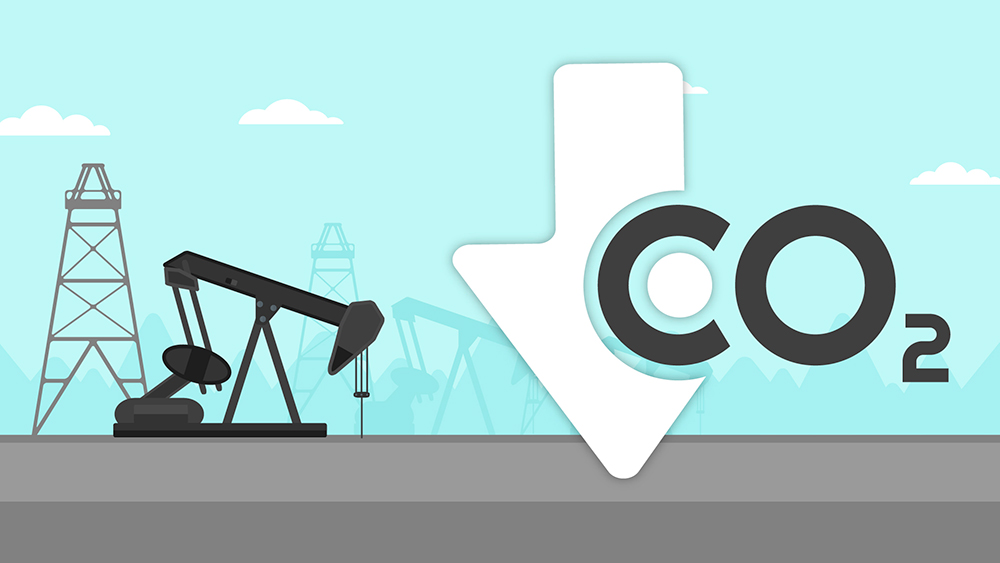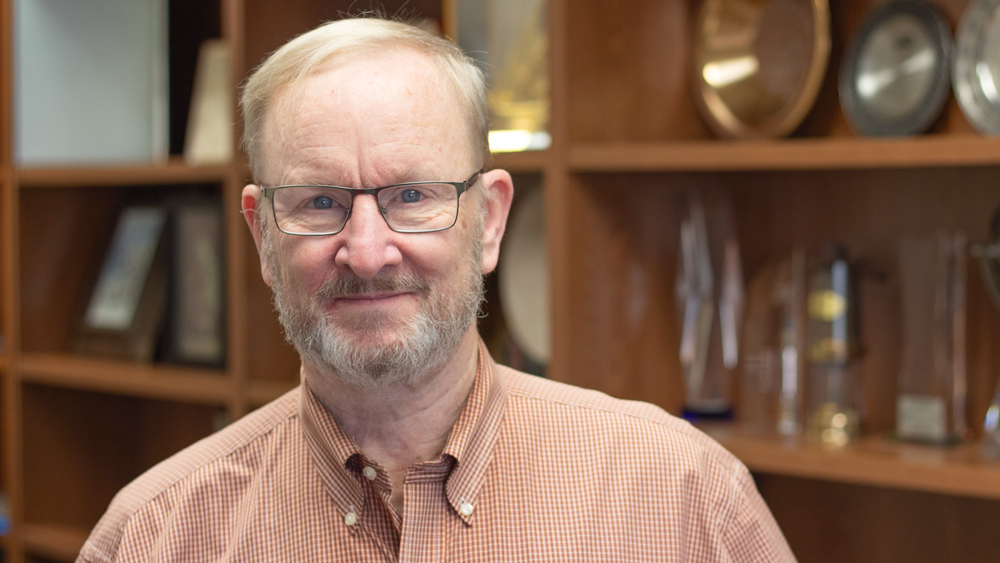
Since 2013, the Chancellor’s Research Initiative (CRI) has attracted world-renowned scholars and researchers to Texas A&M University. Yet even among these top scholars, Dr. D. Nathan Meehan is a standout; he’s the first petroleum engineer accepted under the program.
Given his background, his choice of research funded by the CRI is also singular. Meehan, a professor in the Harold Vance Department of Petroleum Engineering, is spearheading a forward-thinking initiative for future decarbonization efforts. He aims to lower “the total cost of hydrocarbon exploration, development and production.” And by total cost, he will include pollutants and unwanted emissions–such as carbon dioxide (CO2) and methane (CH4)–to the usual costs of producing oil and gas.
“The decarbonization of the energy industry, particularly of the oil and gas industry, is complex,” said Meehan, a National Academy of Engineering member. “It involves economics. It involves public policy. It involves an inherently multidisciplinary approach to do more than just capture carbon dioxide, transport it and store it in the subsurface.”
Why would I encourage a young person to be a petroleum engineer today? One reason is that we can be part of the solution.
What is decarbonization?
Abnormally high amounts of CO2, CH4 and other greenhouse gases in our atmosphere can raise our planet's temperature. Lowering the levels of these gases is recognized by scientists as a significant step in stabilizing our environment. One aspect of decarbonization is capturing CO2 generated from human activities and either repurposing it or storing it safely and securely. This solution sounds simple, but it isn’t, considering how much CO2 is produced annually.
Total U.S. greenhouse gas emissions in 2021 were 6,340 million metric tons of CO2 equivalent. Fossil fuels account for about 75% of greenhouse gas emissions and 90% of all CO2 emissions. Meehan said improving efficiencies, decreasing venting, flaring and fugitive emissions and using CO2 capture and storage can materially reduce the impact of oil and gas on such operations.
Producing oil and gas has changed significantly in the last 160 years as the industry deals with more complex reservoirs to keep pace with global demands. Many operational practices prioritize time and cost. Investigating these practices would provide clues to improving the industry’s environmental track record and could potentially influence a change in thinking.
“Many prospective college students aren’t interested in becoming petroleum engineers, partly because of the reputation we have,” said Meehan. “Why would I encourage a young person to be a petroleum engineer today? One reason is that we can be part of the solution.”
Meehan has spent decades working in oil and gas. He chose Texas A&M because the petroleum engineering department is “so visible and has such a great tradition that its influence is outsized.” His solution to decarbonization involves collaboration across multiple disciplines, including the department, Mays Business School, the Bush School of Government and Public Service and other engineering departments at Texas A&M.

Tackling emission reductions
Oil wells produce carbon dioxide and other greenhouse gas emissions mainly from the exhaust of machinery needed to work the equipment, though other sources include flaring, venting, fugitive natural gas emissions and other oilfield operations. Meehan explained that applying renewables to oil and gas operations to reduce emissions, such as using solar energy to generate steam for thermal recovery or using renewable energy sources to power compressors, is limited. Better options come from revising current production methods to make them more efficient and effective, which could include:
- Using distributed acoustic sensing with optical fiber cables downhole to monitor reservoir behavior and fluid flow.
- Making flaring brief, infrequent and efficient.
- Replacing pneumatic actuators and other equipment that releases methane with, for example, electric actuators to reduce emissions.
- Using natural gas from wells for energy production on site.
- Optimizing unconventional well development to avoid uneconomic wells and eliminating emissions associated with those wells.
- Detecting and rapidly repairing methane leaks with fixed and drone monitoring.
“Routine use of drones over facilities and pipelines with methane sensors and fixed-point measurements can promptly identify point sources,” Meehan said. “This problem is intrinsically multidisciplinary and would engage other Texas A&M resources with excellent reputations and skill sets.”
Evaluating subsurface storage
The most effective method to keep CO2 out of the atmosphere is not to produce it. Yet Meehan said the subsurface storage of CO2 will be critical to achieving climate goals even with a rapid transition from primarily fossil fuels to clean, renewable energy sources.
Petroleum engineers have successfully implemented methods that use CO2 to enhance oil recovery in the Earth’s subsurface for more than 40 years. Such experience is critical to understanding how to store the gas safely and the costs and procedures involved. For instance, when CO2 is injected downhole to enhance oil recovery, it’s controlled by the operator and is a matter of oil and gas rights. Meehan said CO2 injection into a saline aquifer for storage is different and could be a matter of surface owner rights.
“Should surface owners lease pore space for an upfront payment?” Meehan asked. “Should they get annual rents and/or a royalty based on how much CO2 is stored? What kind of guarantees would they reasonably expect to demand from an operator to ensure the CO2 stays where it is supposed to?”
These questions are extensions of what petroleum engineers are good at — evaluating subsurface assets.
Meehan will work on a solid technical basis for future regulations of CO2 storage and collaborate with regulators and the Bush School to define potential policy pathways because the responsibility for CO2 storage will likely revert to governments.
Researching the challenges
Meehan said the expected 2050 injection targets for CO2 are quite large, equivalent to current oil production volumes. According to Statista, the amount of oil produced globally in 2022 was just shy of 94 million barrels, with each barrel holding 42 U.S. gallons.
“The total investment cost is going to be comparable to the total investment in the oil and gas industry that we do ongoing,” Meehan said. “There are a lot of challenges, and the absolute scale of them is substantial.”
Injection permits are one challenge. Coordinating the regulations and who regulates would improve the process.
Retired oil and gas wells might not be the only place to store CO2, either. According to Meehan, excellent potential reservoir candidates exist along the Gulf Coast, both onshore and offshore, in high-quality saline aquifers that are laterally extensive. Research is already underway on testing the geomechanical suitability of these formations and the best way to monitor them.
Another challenge is determining the best way to transport CO2 to the storage sites. Evaluating the use of pipelines, rail lines or highways and the compression needed for each method will involve more multidisciplinary investigation. Political risks in developing new projects, especially those involving pipelines, are significant, even for very safe technologies. Once safe and efficient methods are discovered for the oil industry, they can be applied to other industries scattered throughout the U.S. that also produce CO2, such as ethanol plants, cement manufacturing, steel production and other manufacturing areas.
“I want to get things going, to solve problems that require interdisciplinary collaboration,” Meehan said. “I don't know the scale of decarbonization we'll be working on, but I'm betting it's significant. We’re never going to win the public over completely, but we must continue to do the things that make a positive impact.”